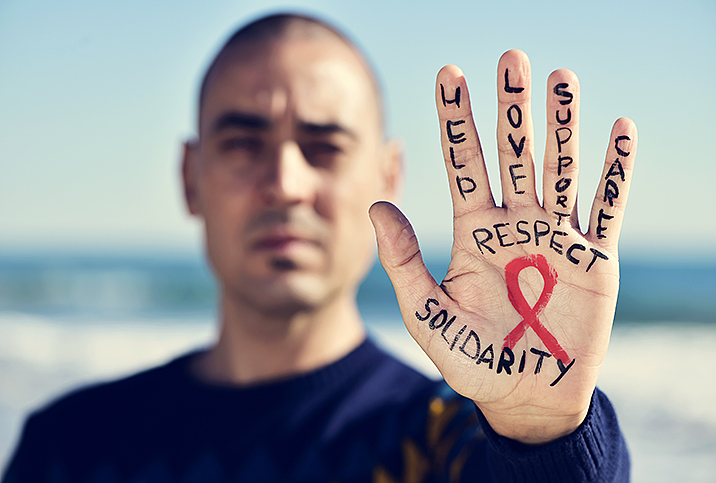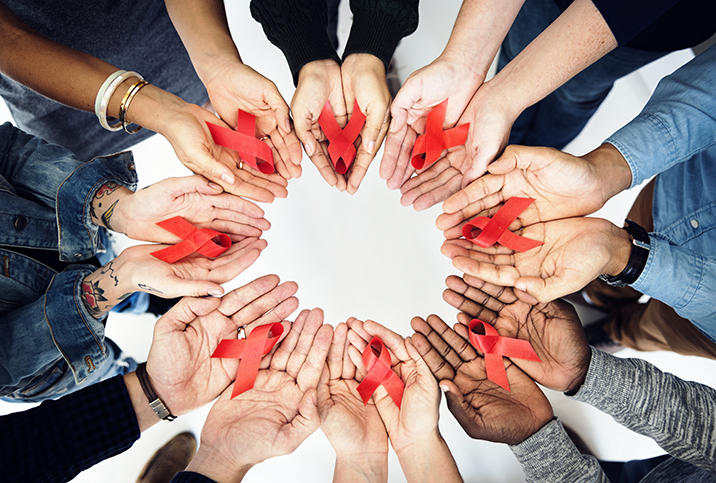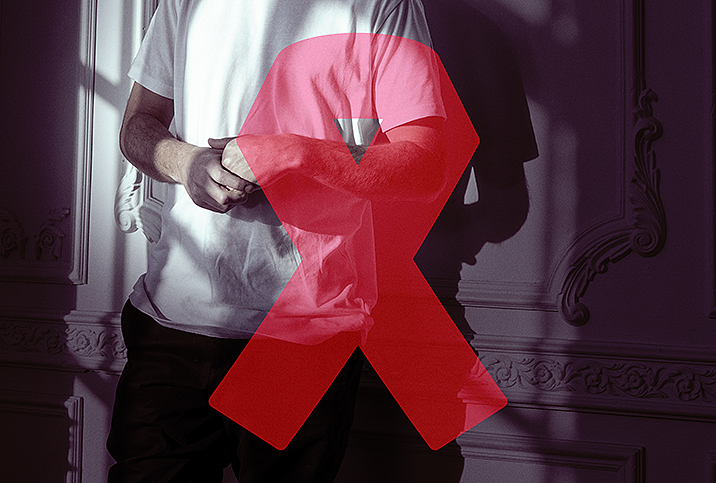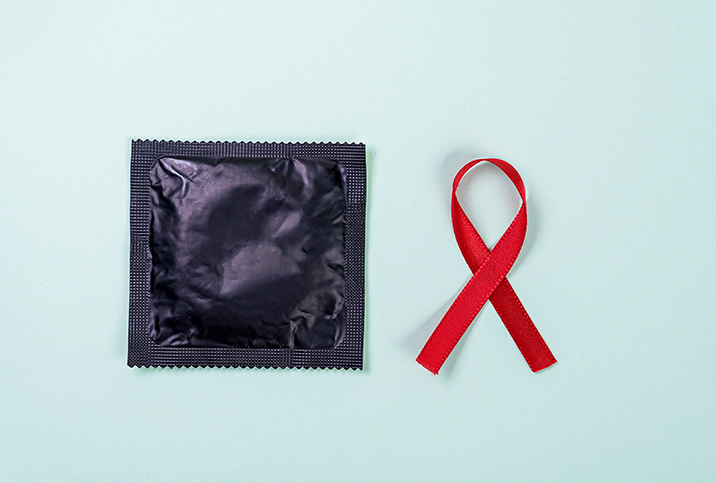How Do You Know If You Have HIV?

Updated: April 17, 2024
On April 18, National Transgender HIV Testing Day recognizes the continued impact of HIV on transgender communities and emphasizes the importance of regular HIV testing and access to HIV prevention and care services.
Fortunately, testing is easier than ever these days. In March 2023, the Together TakeMeHome program was founded to provide free HIV self-tests in the United States, including Puerto Rico. Providing information and a test kit is fast and convenient, but also makes it easier to combat discrimination, and allay concerns about confidentiality and transportation challenges.
The Together TakeMeHome program has distributed more than 450,000 home tests over the past year, almost 60,000 tests going to those who had never been tested before.
What is HIV?
Human immunodeficiency virus (HIV) is a virus that attacks the immune system and damages the body’s ability to ward off disease and infection. There is no cure for HIV, but medications can control the infection and prevent progression to human immunodeficiency virus (AIDS).
Without HIV treatment, HIV typically becomes AIDS within 10 years.
HIV is sexually transmitted and can be passed through anal or vaginal sex but can also be spread by sharing drug injection supplies.
Bodily fluids that can transmit HIV include blood, semen, pre-seminal fluid, rectal fluid, vaginal fluid and breast milk, according to the Centers for Disease Control and Prevention (CDC).
HIV is transmitted via fluid to a mucous membrane or directly injected into the bloodstream through drug use equipment.
At the end of 2021, an estimated 1.2 million people in the United States were living with HIV, according to the CDC. Of that number, only 87 percent knew they had HIV.
Science has made tremendous strides in HIV treatment in recent years, including potential medical breakthroughs in a handful of people and a significant decline in reported HIV rates.
Since its highest rate of infection in 1984 and 1985, when more than 130,000 infections were recorded each year, HIV incidence has decreased by 72 percent, down to 36,136 in 2021, according to data published by the CDC.
HIV is becoming less common, and no longer a death sentence, but it remains essential to get tested so you can receive proper treatment.
What are the symptoms of HIV?
One of the primary reasons some people with HIV don't realize they contracted the virus is because symptoms aren't always evident. Symptoms also frequently vary from person to person, according to Debra Laino, Ph.D., a clinical sexologist, sex educator and sex therapist based in Delaware.
"HIV-infected individuals often note no symptoms attributable to HIV," explained Suman Radhakrishna, M.D., an infectious diseases physician at CHA Hollywood Presbyterian Medical Center in Los Angeles.
Reactions to the infection vary depending on the person, making it tricky to know if you have the virus or if it's something else.
When no one symptom is a red flag, it should be easier to diagnose if the symptoms are viewed from a bodywide perspective. To diagnose someone with HIV requires a closer look at the symptoms.
"Symptomatic individuals often have nonspecific symptoms ranging from mild, flu-like symptoms—body aches, fever, sore throat—[to] swollen lymph nodes, rash, difficulty swallowing, groin-area sores or ulcers, nausea, diarrhea, abdominal pain, weight loss, cough and shortness of breath, headache and fatigue," Radhakrishna explained.
In the initial stage, referred to as acute HIV infection, people might not show any symptoms. Laino said when symptoms arise, they can take a couple of weeks to months to occur.
People might not feel sick from HIV for an entire decade or more, according to Planned Parenthood.
"When individuals have very mild symptoms, they might ignore them," Radhakrishna said. "Two to four weeks after exposure, newly infected individuals can have symptoms of fatigue, fever, headache, body aches, rash, sore throat [and] enlarged lymph nodes."
Each of these symptoms can pass for the flu—and might be easy to dismiss.
"Initial symptoms can last for several weeks," Radhakrishna added.
Testing for HIV is essential
A lack of symptoms does not indicate a lack of infection, so it's essential to receive regular HIV testing.
"Look out for the warning signs, such as flu-like symptoms," Laino suggested.
Regardless of whether or not you've noticed physical changes, getting tested after exposure or potential exposure is critical, Radhakrishna said. Everyone should get tested for HIV at least once in their lifetime, according to the CDC.
You should get tested at least once a year if you have risk factors, including:
- Sharing drug injection equipment
- Having anal or vaginal sex with people who have AIDs or HIV
- Having sex with a new partner since your last HIV test
- Receiving treatment or diagnosis for a sexually transmitted disease (STD)
"If a person is having unprotected sex, they should be tested regularly," Laino said. "There are many clinics around the country where there is free testing. A person can also visit their medical doctor and ask for an HIV test."
A simple saliva or blood test can be used to diagnose HIV.
Unfortunately, assuming you do not have HIV because you don't present symptoms is not an effective strategy and can be potentially harmful to transmission rates and your health.
One in five people don’t know they have HIV. according to CDC estimates, and may unknowingly be part of the reason current infection levels are so high.
Prevention of HIV is the best strategy
"The most important thing about HIV is to prevent it," Laino explained. "The use of condoms is the best way if you are sexually active."
For people who inject drugs, using clean needles is crucial.
Radhakrishna added that pre-exposure prophylaxis (PrEP) is another way to stay protected. PrEP can reduce your chances of getting HIV through sex or injection drug use.
"PrEP includes a once-daily pill to prevent HIV and, more recently, injectable medication administered every two months," Radhakrishna said.
You must be HIV-negative to start PrEP. When taken as prescribed, PrEP reduces the chances of getting HIV through sex by 99 percent, and about 74 percent for people who inject drugs, although more research is needed in this field. People who inject drugs can take the pills but not the shots, according to the CDC.
How to get treatment for HIV
To receive treatment, you need to first confirm your HIV status.
"[Antiretroviral therapy] is typical for HIV treatment, which stops the virus from replicating," Laino said. "A healthy lifestyle is also highly recommended, such as eating a healthy diet with a lot of antioxidants, and exercise as well as stress management."
Antiretroviral therapy (ART) has significantly reduced mortality rates, suggested a 2014 report. Without treatment, the chance of HIV progressing to acquired immunodeficiency syndrome (AIDS) is higher.
People should begin antiretroviral therapy as soon as possible upon receiving their diagnosis—even on the same day, according to HIV.gov.
"Treatment controls HIV and prevents progressive damage and destruction and allows infected individuals to lead a symptom-free life," Radhakrishna explained.
While an infected person with no symptoms can transmit the virus, when HIV is undetectable in the bloodstream, it's untransmittable.
"This will stop the cycle of transmission of new infections," Radhakrishna said. "Treatment of concomitant illnesses, such as hepatitis C, also improves and maintains the quality of life."
The bottom line
HIV symptoms can range in severity and presentation, depending on the person and the stage of the infection.
"No symptoms are most common," Radhakrishna said. "Individuals at risk for acquiring HIV should frequently be screened for HIV and sexually transmitted infections since STIs increase the risk of acquiring HIV."


















